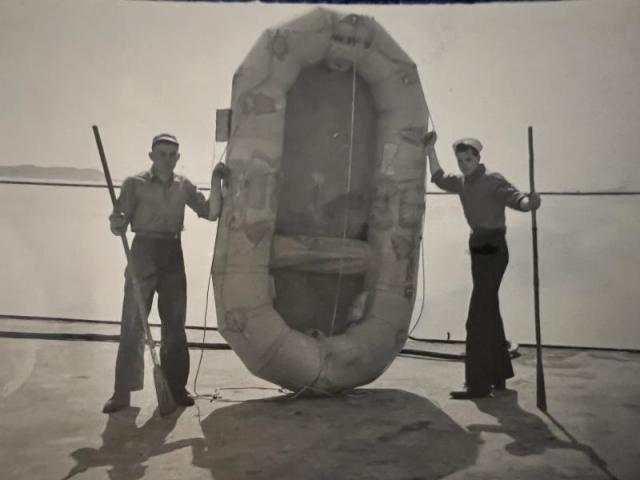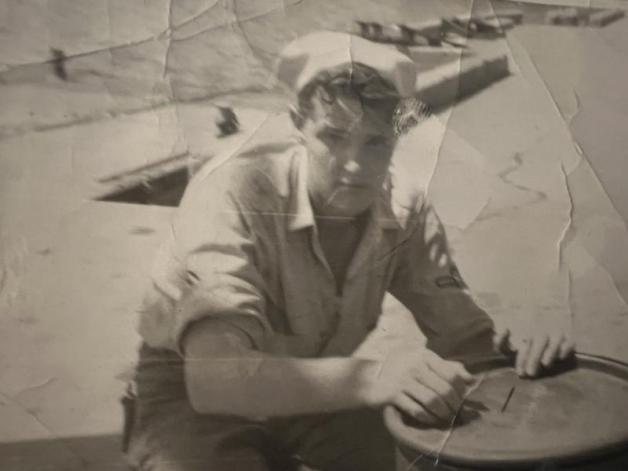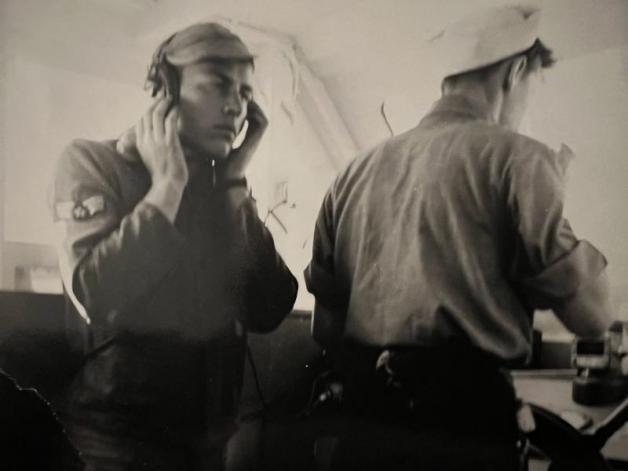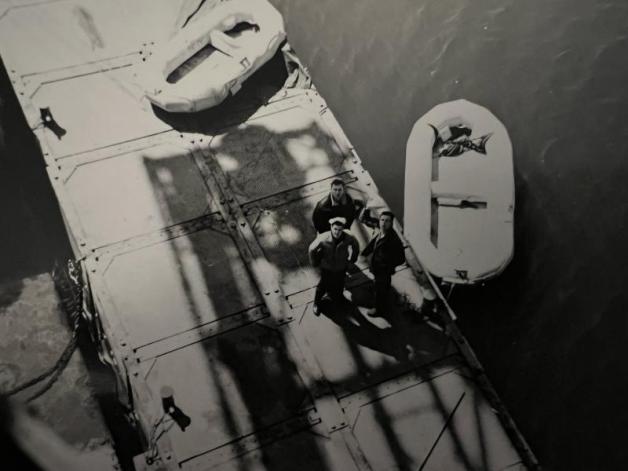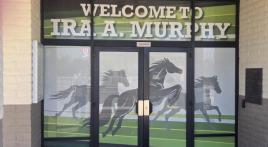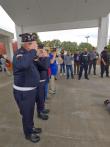I joined the Air Force at 17 on 1 March 1950, completed basic training at Lackland and subsequently trained as a surgical technician at Fort Sam Houston in San Antonio. On June 25 of that same year the Korean War began. After a brief stay at Langley AFB, Va., I was sent to the Far East Air Materiel Command (FEAMCOM) at Tachikawa, Japan. Shortly after arriving and settling in, a call came for medics to volunteer to go to Korea to replace Army medics whose ranks were being drastically depleted by the communists. Medics were specifically being targeted because of the belief that for every medic killed, at least 20 wounded likely would die for lack of medical attention.
I volunteered to go because I was extremely unhappy in the position I had been assigned. Fortunately, older and wiser heads prevailed. The hospital administrative staff refused to let me go! In retrospect, I view this as the Hand of God. However, at the time, I didn’t quite see it that way and I appealed their decision which resulted in my being transferred to a small base situated on Tokyo Bay: Kissarazu, AFB. This base had been used by the Japanese for pilot training during WWII. I was the replacement for the crash boat medic, who was due to rotate back to the States.
Our boat, “Charley 412,” (C-412), was a hold-over from WWII, 36 feet long with an enclosed cabin and powered by a huge Gray Marine Diesel. Her skipper, A/1c Eugene Verville, and myself comprised her crew.
Kissarazu AFB was a critical link in the logistical supply train supporting our military forces in Korea. Base personnel processed dismantled fighter jets and prepared them for service by the USAF operating in Korea. The U.S. Navy ferried cocooned F-86 Sabre jets (wings removed) on board “jeep” carriers to our base where they were restored to flight-worthiness. After all systems were checked out, the aircraft were subjected to a series of test flights over unpopulated Tokyo Bay. When all flight test criteria were satisfied, they were flown to Korea ready for combat. The mission of C-412 was to stand by out on Tokyo Bay while each test flight was in progress.
On a very cold February 1952 morning, we headed out across Tokyo Bay to the big U.S. naval base at Yokuska to pick up a new fuel pump for our engine. We had agreed to let an unattached sergeant come along with us, just for the ride, because he was ready to rotate home the next day and needed to kill some time. After 70 years, I can’t remember his name, just that he was an OK guy. At Yokuska, we completed our business and, believing we had enough daylight to get home, we headed back across the bay planning to install the new fuel pump the next day.
We were halfway home when the engine, located aft of the enclosed cabin, quit! The two sergeants began changing out the fuel pump and, I, after dropping our anchor and calling in our situation to the tower at Kissarazu, started to become seasick. The waves were no longer just “choppy,” and the wind, gusting from seemingly all directions, was no longer just a breeze. The sun was in process of rapidly being blotted out by dark, nasty-looking black clouds and the temperature dropped noticeably. Shortly thereafter came the wind-lashed rain and sleet. The deck space aft of the cabin, surrounding the engine, was very quickly awash with sleet. The work replacing the fuel pump came to a halt as the steeply tilting deck and weather conditions combined to make it impossible, and dangerous, to continue. Gale-force winds eventually created waves as high as a normal room’s ceiling – possibly higher! So the three of us sheltered in the cabin where radio contact with the Navy at Yokuska informed us that their charts indicated that we were in water lacking the depth necessary to accommodate the draft of any available rescue vessel at their disposal. Disappointing news, to say the least.
It soon became totally dark outside, relieved within the cabin by an overhead light. We spent the long, long night taking turns pumping the bilges, upchucking and being angry that the Navy had written us off. At that point in my 18 years of life I was a professed Christian, but a very carnal one. Knowing we were in very deep “Kimshee” I did what thousands of others before me have done: I called out to God. In prayer, I asked him to calm the sea as He had done in a storm on the Sea of Galilee. It didn’t happen! However, in the morning, recognizing we were losing the battle with the bilge pumps and that the storm had in no way abated, Sgt. Verville made the decision that we would abandon the boat and take our chances in a raft. His thinking was that the raft would drift to shore and, with some luck, we would be able to survive the surf and get in to the beach.
Yellow life rafts are manufactured equipped with a CO2 cartridge with which to instantly inflate the raft to service readiness. The cartridge for this raft was missing! Plan B: blow it up by mouth. Hero that I was, I refused to take my turn blowing into that tube! I was just too darn sick to care if I lived or died. So the long and tedious task of inflating the raft fell to the two sergeants. When the raft was fully inflated and I was feeling a little better, I did do one, hopefully redeeming, thing that needed doing. When we put the raft in the water secured with a line to a stern cleat, I held on to the same cleat and grabbed the raft between my legs allowing the other two men to use my body to assist them in getting into the raft. They then got a good hold on me so I could release the line from the cleat and they could pull me into the already swamped raft.
Words fail me to adequately describe the shock of sitting down in the flooded raft! Suffice it to say. It didn’t last but a few seconds. As we rapidly drifted away, we watched Charley – 412’s final struggle with the wind and waves. It wasn’t long before she went down in a trough and never came up again!
None of us said as much, but we were beginning to actually feel warm – the water, not so cold. I attributed this to the fact I had the good fortune to be wearing “Long Johns.” Strangely enough, I was no longer feeling sick. Sitting, hunkered into my foul-weather jacket, sliding up and down through the troughs I was no longer sick, go figure. I don’t know how long it took before the surf tried its best to dump us overboard. All I remember is that it was a long while before I realized someone had a grip on me at the back of my neck pulling me out of the raft up onto the beach. What had happened is that three officers from our base, two of them chaplains, when they saw we needed help, had ran into the surf dressed in full dress blues to make sure we made it to safety!
Once we were on solid ground, we were placed in a well-heated ambulance where we took off our wet clothing, given white robes and put on stretchers, and driven to the flight line. We were placed on a twin engine Beechcraft and flown to the FEAMCOM general hospital at Tachikawa. We were treated there for exposure and discharged after three days.
Subsequently, the Navy – in my mind – “kissed and made up“ by loaning us another, larger boat so we could go back to performing our mission.
No, God did not calm the sea, but He did get us to safety! He does things His way and in His time. Life lesson: He never fails!
A/2c Robert H. Reese
